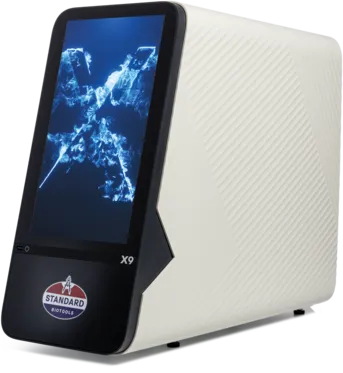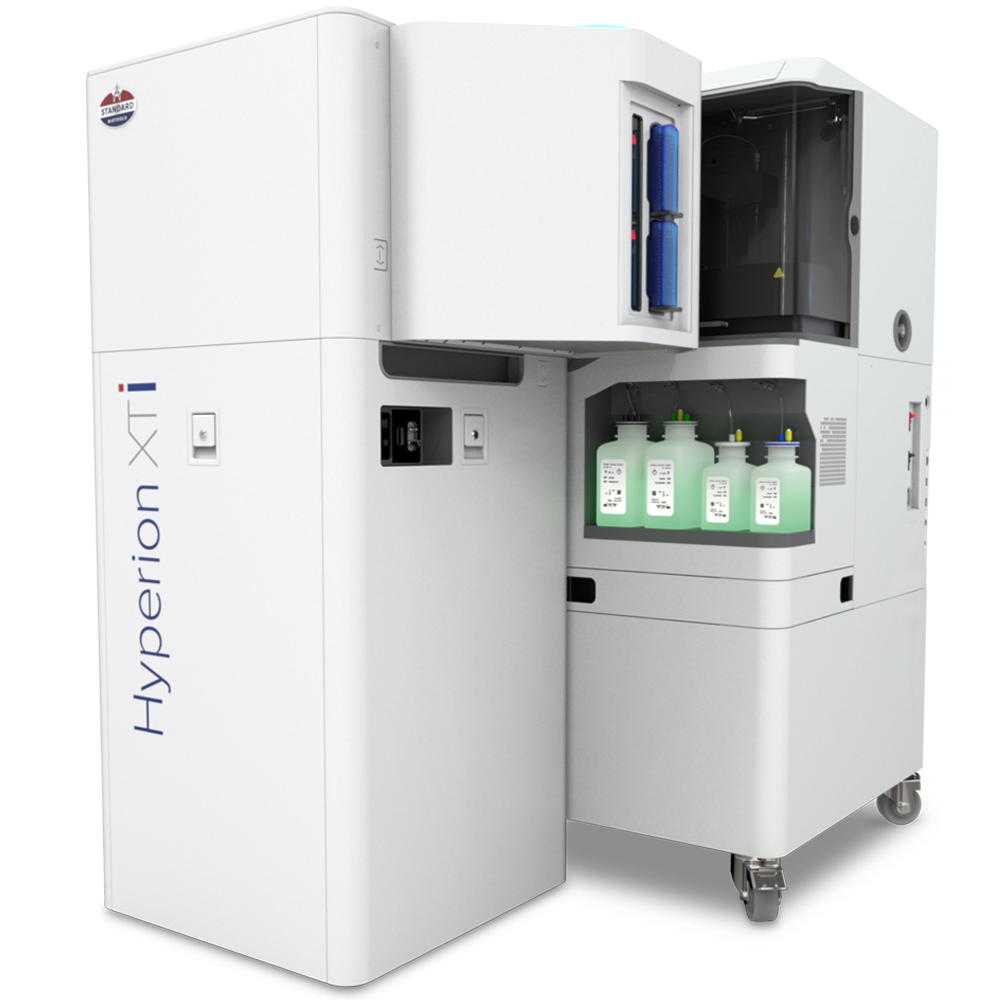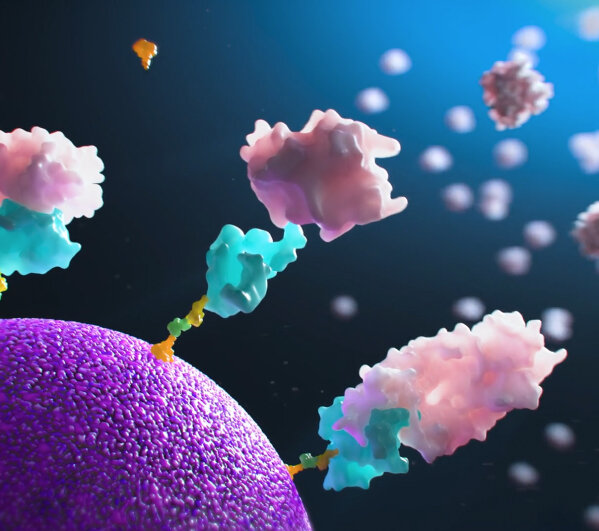Infectious Disease
How communicable diseases impact our world
Infectious diseases, defined as illnesses transmitted from an infected person or animal or contaminated object to a host, are caused by pathogenic microorganisms such as bacteria, viruses, parasites or fungi. Communicable diseases cause substantial morbidity and mortality: those that do not result in death can cause health-related quality-of-life issues, lifelong challenges and disabilities. They are also responsible for a staggering global burden of disease: Outbreaks affect vulnerable populations, impact public health systems and batter economies, costing trillions of dollars and millions and millions of life years lost.

Timely tracking of outbreaks
The transmission of infectious diseases has been accelerated by worldwide technologic, demographic and climate change. Epidemics and pandemics such as Ebola, Zika and COVID-19 demonstrate how pathogens can spread undetected for some time before being diagnosed. Global warming, a mobile, growing population and increasing urbanization have all contributed to an environment in which monitoring pathogenic microorganisms has become crucial. Strategies and tools must continue evolving to meet the needs of the global population and aid in the timely detection, tracking and study of outbreaks.
Methods to predict, monitor and treat infectious disease
Pathogen surveillance is the ongoing collection, analysis and interpretation of data to help prevent and control outbreaks. It depends on key tools that include genomic testing, data generation and sharing, which are implemented routinely by accredited labs with requisite expertise.
There are a variety of methods used in researching infection and communicable diseases. Epidemiological monitoring and screening algorithms aid in early detection and help limit impact. The early identification of emerging variants helps shape critical public health interventions. Tools that facilitate pathogen detection and identify the molecular signatures of infection can guide the development of effective therapeutics.
However, infectious disease research faces challenges. Active disease monitoring, drug discovery and the establishment of anti-infection strategies are expensive and time-consuming. Traditional technologies, such as testing for pathogens individually, limit flexibility and cannot keep pace with mutations. Genomic- and proteomic-based tools support research into communicable diseases and vaccine response, identifying novel patterns and mechanisms of resistance, assessing immune response, performing timely detection and tracking of outbreaks, and monitoring the spread of emerging pathogens.

High-dimensional proteomic analysis of immune response to infection
The ability to identify immune cell populations with breadth and depth is crucial in effective research into infectious disease. Techniques such as cytometry provide a fast and effective overview of the immune system and its response to disease; enable the precise identification of immune cell populations and help determine the active roles of cell subsets; and identify and validate disease markers.
CyTOF™ technology provides rapid and repeatable profiling of 50 or more phenotypic and functional markers in a single sample tube, helping users uncover the immunological mechanisms of infection and vaccination from limited sample.
The Maxpar™ Direct Immune Profiling Assay can easily be adopted for use in infectious disease clinical research. The dry-format panel kit has proven run-to-run and site-to-site reproducibility and can quantify small amounts of either human PBMC or whole blood. The 30-marker backbone panel is expandable, with room to add more markers. When paired with Maxpar Pathsetter software, a detailed analytic report on immune cell populations is ready in five minutes or less.

Pathogen detection, identification and surveillance
Rapid detection methods, such as PCR testing, that preserve sample identity and data integrity are becoming more prominent in research laboratories and clinical settings. As the global population grows and human-wildlife contact increases, emerging diseases become more and more complicated, and the ability to test a large number of pathogens with the flexibility to add, remove or replace assays as needed is crucial.
Standard BioTools™ microfluidics-based technologies facilitate the scalable, simultaneous detection and characterization of bacteria, viruses, fungi and parasites present within each sample with automated, singleplex simplicity thanks to an open architecture that allows assay targets to be easily updated to match evolving needs.
The Biomark™ X9 System for High-Throughput Genomics delivers thousands of nanoliter-scale reactions in a single run, streamlining PCR workflows and generating insights that can help with surveillance and lead to a more comprehensive understanding of disease dynamics. Our precision-manufactured integrated fluidic circuits (IFCs) also support different configurations of samples and assays for a broad range of applications, meaning researchers are able to keep pace with changes in sample volumes as well as pathogens as they emerge and evolve over time.

Spatial biology of pathogen behavior
Visualization of the spatial distribution of pathogens and the host immune response can reveal the dynamics of infection and what the immune system can and cannot do to combat it, further building a foundation for targeted therapies. Technological advances allow us to not only see what things are but what they do, which exponentially increases our knowledge of how we can detect and react to disease and is key in understanding response to pathogens and pathogen behavior and activity within the human body.
Imaging Mass Cytometry™ (IMC™) technology allows for the spatial visualization of immune response in tissue samples and enables high-plex spatial profiling of the host immune response. IMC technology can be used to spatially assess immune infiltration and gain a clear, detailed look at the characterization of specific cells as well as their complex interactions with neighbouring cells and their microenvironments.
Imaging Mass Cytometry technology provides comprehensive visualization, quantitation and phenotypic characterization of immune subsets, helping researchers determine communicable disease pathogenesis and severity. This allows for the potential development of scientific advances that could change the global approach to prevention, treatment and cures for current and future infections.

Proteomics identifies biological processes associated with infection
Proteomics gives a broad overview of protein dynamics withing a biological system. The ability to view thousands of proteins at once at a given time point provides insight into how different individuals react to pathogens and how we can better understand targeted treatments. High-plex proteomics has the potential to predict progression, identify disease subtypes and those at risk for severe illness, repurpose existing drugs by matching them with drivers of progression, identify new drug candidates, accelerate clinical trials and use protein expression patterns to facilitate vaccine development.
The SomaScan™ Assay lets users measure thousands of proteins at once to help better understand the mechanisms of treatment, using proteomics to help researchers identify biological processes associated with infection and measure changes in response to interventions.
Applications
Pathogen detection
Amid rising threats like disease outbreaks and antimicrobial resistance, accurate and fast pathogen detection and surveillance are essential. Shedding light on the microbial world can be laborious and expensive, and challenges like limited target capacity, pathogen diversity, sample volume and throughput limitations, slow turnaround time and a high risk of manual error highlight the need for more nimble and innovative solutions.
Read about how to tackle public health challenges
Protein profiling
Tracking the immune response can shed light on mechanisms of disease and show potential for use in patient stratification and monitoring treatment efficacy. Proteomic approaches can help define the protein makeup of pathogens, identify how treatment or disease affects the proteome and clarify host-pathogen relationships.
Learn more about large-scale proteomics for COVID-19
Immune profiling
Immune profiling is the practice of identifying and quantifying immune populations according to their phenotypic and functional features. A powerful tool for understanding an individual’s unique immunologic response to disease or therapeutic interventions, immune profiling can capture the highly individual nature of immune response and potentially predict health outcomes.
Read about our robust immunophenotyping assay
Infectious Disease with Imaging Mass Cytometry
Imaging Mass Cytometry™ adds the capability of spatial visualization of immune response in tissue samples. This high-multiplex imaging technology enables the study of clinical outcomes and changes in...
Infectious Disease with Mass Cytometry
From SARS-CoV-2 to HIV, malaria, S. Typhi, Ebola and smallpox, mass cytometry is driving understanding of infectious disease and innovation in vaccine development.
For Research Use Only. Not for use in diagnostic procedures. Patent and License Information: www.standardbio.com/legal/notices. Trademarks: www.standardbio.com/legal/trademarks. Any other trademarks are the sole property of their respective owners. ©2025 Standard BioTools Inc. All rights reserved.
